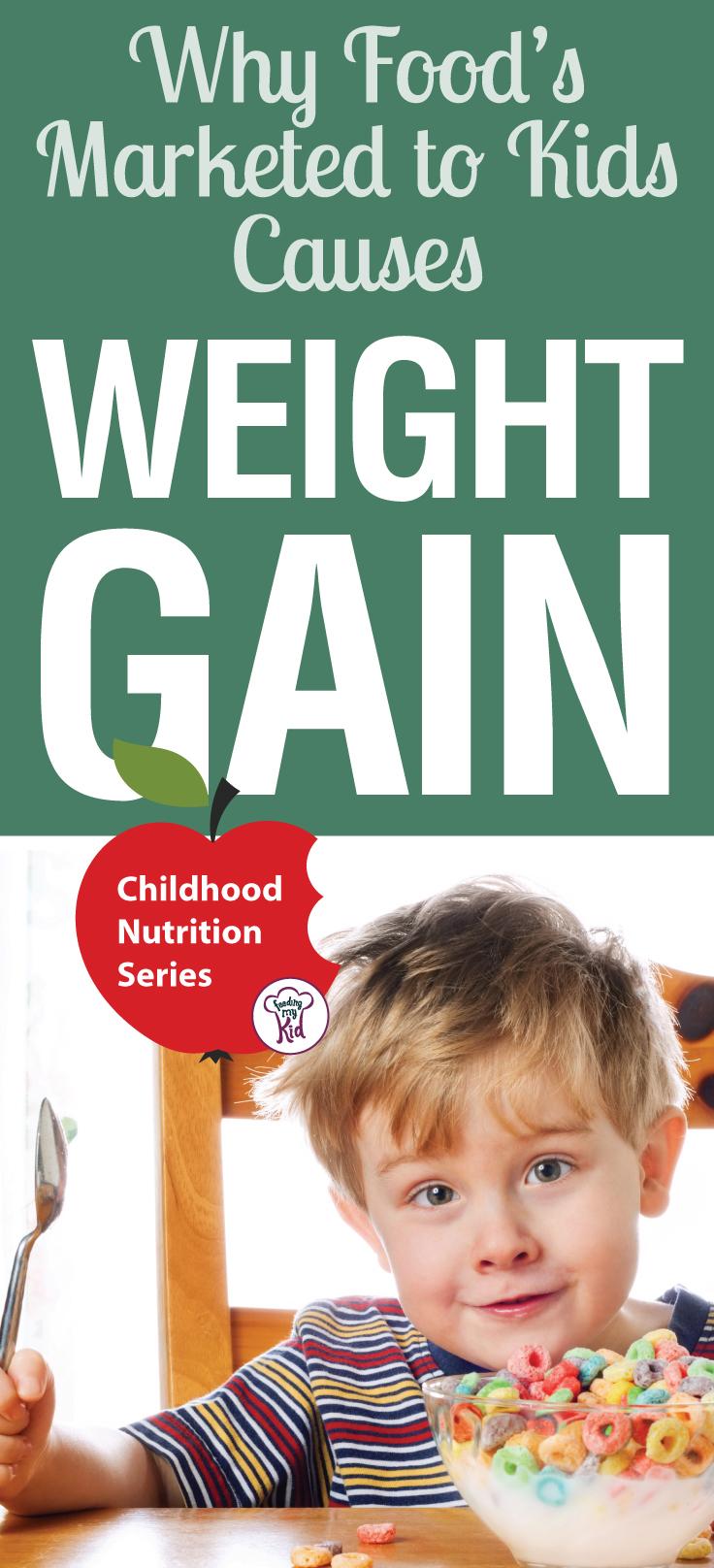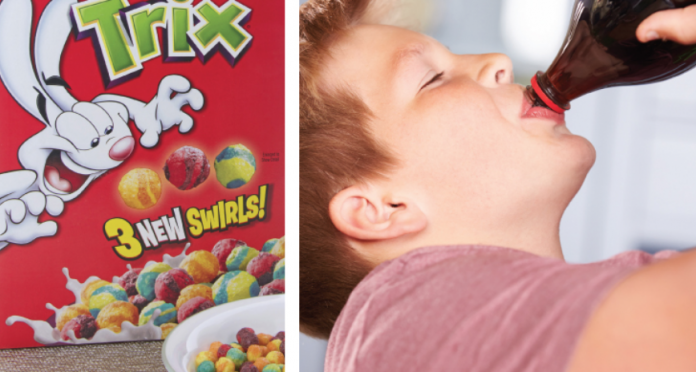 What does a toucan, tiger and elf have anything to do with each other? No, they aren’t in the latest childhood fantasy novel (though, I wouldn’t be surprised if they were). They’re all marketing ploys to get your kids to eat more foods that are high in sugars, fats and—well…, junk.
What does a toucan, tiger and elf have anything to do with each other? No, they aren’t in the latest childhood fantasy novel (though, I wouldn’t be surprised if they were). They’re all marketing ploys to get your kids to eat more foods that are high in sugars, fats and—well…, junk.
Toucan Sam, Tony the Tiger and the Keebler Elf are all marketing tactics created to help promote a brand and to ultimately manipulate children into demanding these foods.
“Children develop deep emotional relationships with these characters and mascots…,” Assistant Professor of food and Nutrition Policy at Virginia Tech, Vivica Kraak, said to Fox News.
So the next time your son demands a box of cereal with a happy looking bird on the front, you’ll know that marketing is working too well.
Food Advertisement
There is a strong relationship between food advertisements and obesity in kids.
From fast food restaurants, like McDonald’s and Burger King; to sugar filled products, like Cap’n Crunch and Fruity Pebbles; the food industry is pushing its product out to kids with fierce advertising from commercials to mobile gaming ads (2).
Kids watch a staggering number of advertisements in a single year—approximately 5,500 (4). And kids who watch more TV are more likely to go to fast food restaurants (5). This is because advertisements promote unhealthy eating, making unhealthy foods look tasty fun and cool.
Kids watch commercials and it drives demand for these foods, products and services. A recent survey conducted showed that 30 percent of children go to a fast food restaurant at least once a week (5).
In essence, all of our children are being exploited. They are being manipulated to eat some of the unhealthiest foods produced. Why? The more processed a food is, generally, the higher profits these companies make on the food. These companies are targeting you and your kids and making billions in the process. Because of these overt-marketing tactics, American children are getting diabetes, heart disease and other health issues (2).
Check out our other articles in our Childhood Nutrition Series:
- Why You Shouldn’t Put Your Child on a Diet. Do These 9 Things Instead.
- How to Best Talk to Your Kids About Their Weight!
- How Juice Went From A Health Food to Junk Food
Marketing Towards Children
Marketing towards children has grown into a multi-billion dollar industry, which is why these marketing tactics are now being scrutinized by the news media and government programs (3).
Food regulators have been trying to put pressure on these industries to either stop advertising to children or make healthier foods (3). And to manufacture genuinely healthier foods and not just manufacturing claims on packages, such as “all natural.”
Why can’t there be a Tony the Tiger of apples or a Toucan Sam of asparagus?
The food industry knows what they are doing. They know who to target and how to target and sell. And they’re selling to you and your kids!
Why Are these Foods so Bad?
Sugar sells. It’s that simple.
There’s good reason why one in every three children in this country are overweight or obese (6). These foods, like cereals, candies and fast foods are high in fat, salt and sugar. They are cheap to produce and yield high profits for food manufactures, grocery stores and fast food restaurants.
Sugar has become a staple product for food industries to sell. Whether its in your child’s morning cereal or added to yogurt, sugar is everywhere (6). With food being manufactured to reach that perfect “bliss point,” it’s hard for kids to say no to these foods.
Unfortunately, sugar is linked to a number of diseases, including heart disease and diabetes (7). Sugar wreaks havoc on the body and the more of these foods your child eats, the more likely your child will be malnourished and out of shape (7).
Through this article series, our hope is to increase awareness of the foods parents are buying for their kids; which may not be as healthy as their claims. TV ads have recently been deliberately catered to parents to buy these foods for their kids.
Yogurt of All Things!
Yogurts targeted to kids are not as healthy as the claims will lead you to believe. I used to give my twins these organic yogurts as a part of breakfast and I thought I was doing a good thing for them. But I soon realized I was giving them 4-5 teaspoons of sugar just from their yogurt alone. Every 4 grams of sugar is a teaspoon. How did I not know that until recently? Some of these yogurts have 23 grams of sugar!
Be sure to check the labels (they can be deceptive); there’s probably added sugar hiding in these foods.
“If you’re concerned about your health, you should probably avoid products that make health claims. Why? Because a health claim on a food product is a strong indication it’s not really food, and food is what you want to eat” Michael Pollan, In Defense of Food: An Eater’s Manifesto, says. So be aware of what you are eating.
Food Marketed to Kids with Little Nutritional Value
- Go-Gurt: These have more sugar by ounce than a soda. Go-Gurt is specifically targeting children! Fat-free yogurt usually has more sugar than low fat or whole fat yogurt. This is because when fat is removed it is often replaced with sugar. This goes for most low fat foods. Check labels! How do you know how much sugar has been added to your yogurt? Yogurt normally has about 12g of sugar per 8 ounces. So there is about 1.5g of sugar for every ounce of yogurt. On average, anything over 1.5 g per ounce is added sugar by the manufacturer. TIP: Go for the no-sugar added Greek yogurt. Add your own fruit puree into the mix. I love to add almond butter to my Greek yogurt and in our home e use this mixture as our syrup on pancakes. You can drop in some honey to replicate the sweet taste. Overtime, you can reduce the amount of honey you put into your child’s yogurt until there’s no more honey. It may take some time, but the goal is to reset your child’s taste buds so your kid doesn’t always expect foods to taste so sweet.
- Lunchables are high in saturated fat, salt and sugar. They have 37% of the recommend daily salt intake for an adult. That’s over 50% of the daily recommended amount of salt for a child.
- 100% Juice: Find out how fruit juice went from a health food to a junk food. While it has some nutrients, juices and sodas should be avoided. Have your child eat an orange instead. For each glass of orange juice, four oranges go into it. But unlike 4 oranges, there’s no fiber to make you feel full or help regulate sugar.
- SunnyD Orange Juice has 7.5 teaspoons of sugar (30g) in 8 oz juice (that’s one cup!). That is more than the entire day’s recommended sugar intake for adults!!
- Pre-made waffles are usually high in sugar and low in fiber.
- Cereals targeted to kids: Cap’n Crunch has 16 g of sugar, or 4 teaspoons, for one small cup of cereal and that doesn’t include the sugar already found in milk, which can be another 2-3 teaspoons. Would you allow your child to eat seven sugar cubes for breakfast? Avoid all cereals low in fiber, high in sugar, food additives and food coloring.
- Kid Cuisine can have up to 20 g of fat and 470 calories.
- Hot dogs are usually high in fat and salt. Look for healthier options with no nitrates or go with turkey slices instead.
- Ketchup has hidden sugar added to it. Look for the no sugar added or reduced sugar variety. In Heinz ketchup and Muir Organic ketchup there is 1 teaspoon of sugar per every 1 tablespoon serving. In our home, ketchup is a food group so that adds up to a tremendous amount of sugar per day. This is the ketchup brand we buy now.
- Goldfish crackers and other similar crackers. These have little to no nutritional value and are displacing an opportunity to feed your child something with nutritional value. I’m not a fan of any crackers, chips or pretzels on a regular basis because of their lack of any nutrients.
- Packaged frozen snacks including Toaster Strudel, Auntie Anne’s Pepperoni Pretzel pockets, and hot pockets. Try to avoid them all.
- White bread: High in simple carbs, low in nutrients. Tip: Switch to whole wheat instead of white and rotate peanut butter with almond or sunflower seed butter for more nutrients per bite.
Check out this list of worst kids food from NBC News for even more options.
What to Do? 
As parents who want what’s best for their children, we understand that it can be hard to take a good, healthy approach to eat less foods high in sugars, fats and salts.
- The first step to the problem is to reduce the amount of TV your kids watch. There are many safer alternatives, such as commercial free programing, like Netflix. Some parents use the TV to preoccupy a child’s time while making dinner. Instead, invite your kids to help you prepare the meal.
- If your children are going to watch TV, sit down and watch the TV commercials with them. Ask your child questions about the advertisements he watches and talk to him about what the commercials are trying to do (2).
- If you can, try to make more home cooked meals. Home cooked meals are always healthier. Even get your kids to cook with you! You may even add some unhealthy foods to the table, as you don’t want to forcibly restrict all foods, otherwise your kid will try and sneak the forbidden foods (8). Remember, a healthy diet is key to living a healthy, balanced life. Treats are ok in moderation.
In the end, whether government regulations will actually reduce the number of programs garnered to sell unhealthy foods to kids; it’s up to you as a parent to stay firm and strong and pay attention to the types of foods your child is eating. Make eating healthy foods fun and appetizing and cook more at home.
As Ellyn Satter states in her book Your Child’s Weight, “Your jobs is to find the middle-ground with regard to feeding—to be supportive without being controlling.”
So make the middle ground the dinner table and you’ll find that unhealthy foods and unhealthy food mascots will lose their hold on your kid’s and so lose their feathery wings!

Additional Information and Resources
-
New York Times: How Advertising Targets Our Children
-
New York Times: U.S. Seeks New Limits on Food Ads for Children
-
New York Times: The Right To Sell Kids Junk Food
-
The Guardian: Brands Continue To Increase Fast Food Marketing To Kids
-
Business Insider: Effects of Eating Too Much Sugar
-
Your Child’s Weight: Helping without Harming: Birth through Adolescence. By Ellyn Satter. “Chapter 1” Madison, WI: Pg. 29. Print.

